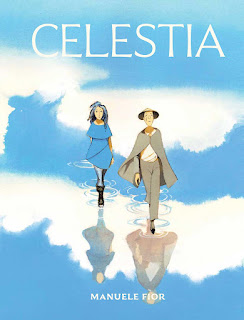Back to Basics, Vol. 3: The Great World by Jean-Yves Ferri and Manu Larcenet
I like to think I’m flexible and adaptable – that I can figure out new things, incorporate them into my thinking, and move forward without a hitch. I’m probably wrong, though. We’re never the people we want to be or think we are.
Over the past few months, I’ve been reading more French comics by writer/artist teams – previously I’d mostly either read massive assemblages like Donjon (which list in detail what each person does, since there are a lot of them) or single-creator works. And it’s taken me a surprisingly long time to internalize that the standard French (maybe Euro in general) credit sequence is artist-writer, the opposite of the US standard. (Colorists, on both continents, are named lower and lesser. Letterers and other folks, where they’re separate jobs, are even more variable.)
Which is to say, when the second volume of the Back to Basics series had a series of jokes based on the opposite of the actual credits of the book, I shrugged – either going along with the joke or mixed-up enough to think it was plausible – and presented it straight. (Or maybe I’m mixed up now. But I don’t think so.)
Anyway, this is a light-hearted bande dessinee series, written by Manu Larcenet – should I mention that all comics creators in the book have slightly altered, “funny” versions of their names? – and drawn by Jean-Yves Ferri, all about Larcenet’s move from Paris to the rural enclave of Ravenelles and his subsequent life there with his partner Mariette and the various colorful rural folk already living there. See my posts on the first and second books.
That brings us up to Back to Basics, Vol. 3: The Great World , in which the first Back to Basics book is finalized and published, in which Larcenet (or should I say “Larssinet;” see above) goes to a major comics show and wins “the Golden Eraser,” and in which Mariette is pregnant with their first child. (The baby is born right at the end, of course – Larcenet knows how to structure a book.)
As before, it’s all told in half-page comics, mostly six-panel grids, which tend to cluster to tell sequences. As I’ve said in the previous posts, it’s a lot like a daily comic in its rhythms and style of humor; as far as I know they weren’t serialized anywhere but they easily could have been.
This is amusing and fun, even if I seem to mostly write about which one of them does what job on the book. (That’s a silly side issue, but when you write about light humor, you grab onto anything specific and quirky to make it your shtick. Come to think of it, that’s not a bad summation of how Back to Basics works in the first place.)
Reposted from The Antick Musings of G.B.H. Hornswoggler, Gent.












































